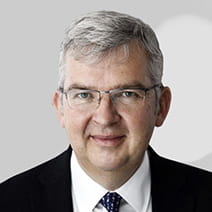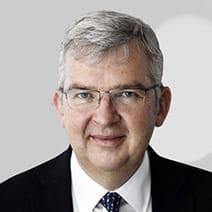- Global markets generally grind higher in July
- Inflation and economic growth data looks healthier in US, less so in Europe
- Ongoing uncertainty could present opportunity for long-term investors
The underlying tone in global financial markets continued to improve as they began the new quarter on a positive note.
The US dominated headlines once again, with the technology giants driving the equity gains, although Japan’s Nikkei paused for breath after hitting 33-year highs in June. Fixed income was also up generally except for US treasuries.
US recovery gathers momentum
US equities recorded their fifth consecutive month of gains in July, which was their longest monthly winning streak since the summer of 2021. Investors have been encouraged by latest data pointing to falling inflation and an economic recovery gathering momentum. The US economy grew 2.4% on an annualised basis in Q2,1 beating market expectations for a 1.8% rise, while the personal consumption expenditures (PCE) index fell from 3.8% in May to 3% in June, which was its lowest level since March 2021.2 The ‘core’ PCE index, which omits food and energy prices, fell to 4.1% from 4.6% in May. Figures from the Q2 earnings season so far showed that although earnings growth was slowing, it was still positive.3
The Federal Reserve continued to tighten monetary policy, raising target rates by 25bps to 5.25%-5.5%, the highest level in 22 years. However, optimism was growing that the rise would probably be the Fed’s last hike in its current cycle.
Despite the growing optimism, some fund managers remain cautious, pointing to the still-inverted yield curve. For example, one US equity fund manager said in July: “History argues that a deeply inverted yield curve makes recession difficult to avoid. However, the longer an economic landing is delayed, in the hope that it can be avoided altogether, the harsher the landing is ultimately likely to be. What seems to be underappreciated, in our view, is that we have entered a new investment regime, and there is a great deal that remains uncertain. Adjusting to this new landscape will take time and be potentially uncomfortable along the way.”
Another fund manager said in July: “The US currently faces a recession and whilst value stocks tend to be associated with underperforming in economic downturns, we don’t necessarily believe this will be the case this time around due to the excessive premium that growth stocks currently trade at in the US.”
The mini banking crisis in March appears to have disappeared off investors’ radars, but one fund manager thought there could still be issues: “Could there be more banks under pressure? The answer is yes, partially because of the US commercial real estate exposure, but we do not feel this is the beginning of a 2008-type crisis as such.”
Another fund manager urged caution: “Investors with US exposure should be cautious by positioning themselves in more resilient and less economically sensitive businesses. A way to do so is to look at companies in sectors such as consumer defensive and healthcare. Investors should continue to avoid business that are too cyclical, have high valuations or that are not predictable.”*
Bonds offer diversification benefits
Global fixed income markets generally saw steady gains over July as yields narrowed on growing optimism about the future direction of interest rates. Emerging market (EM) debt was a notable performer. Only US treasuries delivered slightly negative returns, although inflation data reinforced expectations that their yields were set to fall.
One high yield fixed income manager we spoke to in July was optimistic: “The rally we have witnessed so far this year is more than a bounce following a period of poor performance. It has its roots in a reassessment of the economic outlook, prompted mostly by China reopening its economy and European energy prices coming significantly off recent highs. This has led to upward revisions in growth projections for most regions across the world, the first such revisions we have had in several quarters. Consequently, the outlook for defaults and corporate earnings should also improve compared to what was expected only a few months ago.”
We remain neutral on fixed income. We struggle to get excited about government bonds, even when yields have risen to 400 basis points-plus. This does mean they offer more diversification potential than in the ultra-low yields seen previously. We are, however, positive on EM debt, both government and corporate, given prices are favourable versus what is available in more developed markets.
Inflation still sticky in Europe
If inflation was looking increasingly tamed in the US, it was still proving to be sticky in Europe. Services inflation hit a record 5.6% in the eurozone in July, while headline inflation fell to 5.3% from 5.5% in June but core inflation remained at 5.5%. The ECB raised rates by another 25bps, taking the main rate to 3.75%. The ECB president Christine Lagarde told a press conference in July: “Inflation continues to decline but it is still expected to remain too high for too long.” Hopes for a soft landing in the eurozone were raised by news that the eurozone economy grew 0.3% in Q2 versus Q1. Despite concerns about Europe, it has been one of the better performing equity regions so far in 2023, behind the US and Japan.
Inflation was failing to fall as quickly as policymakers would like in the UK, too. It fell to a 15-month low of 7.9% in June, which was further than expected and this helped dampen expectations of rate rises, but higher for longer interest rates still looked possible. A UK fund manager said in July: “There is likely to be a period of “disinflation” in the UK when the overall pace of price rises in the economy slows, but prices don't actually fall. There is also a consensus that UK equities remain a cheap asset class, but now the question mark is around what might be the “catalyst” to cause investors to look more favourably at the asset class.”
Inflationary pressures increase on BoJ
In Japan, inflation has been seen as a positive. New Bank of Japan (BoJ) governor Kazuo Ueda told central bankers at Sintra earlier this year that economic growth and wages were picking up at home after decades of near stagnation. This structural shift in the economy has caught the attention of international investors for several months, helping to drive a rally in Japanese equities. Latest data showed Japan’s inflation rose to 3.3% in June, which was ahead of the US figure for the first time in eight years. It increased pressure on the BoJ to unwind its ultra loose monetary policy, which still has negative interest rates in place.
Fears that China’s post-Covid recovery was running out of steam were compounded by data showing that GDP quarter-on-quarter growth slowed in Q2 to 0.8% versus the 2.2% seen in the previous quarter. The slowdown was due to falling exports, weak retail sales and a weak property sector.
Overall, July was a positive month for global markets. They are still fickle, can over-react to whatever the latest data or news story says, and investor confidence still seems to be less positive than at the beginning of 2023. But the data seems to signify that developed economies are more resilient than perhaps portrayed in the media and the news around inflation is more positive. The uncertainty weighing on market prices could be seen as offering the opportunity for long-term investors to position themselves for the future, for which we believe a tried and tested, disciplined and repeatable process is the optimal approach.
1Source: Financial Times, 27 July 2023/ US Department of Commerce
2Source: Financial Times, 12 July 2023/ US Bureau of Labor Statistics
3Source: Financial Times, 2 August 2023
KEY RISKS
Past performance is not a guide to future performance. You may get back less than you originally invested.
Any performance shown represents model portfolios which are periodically restructured and/or rebalanced. Actual returns may vary from the model returns. There is no certainty the investment objectives of the portfolio will actually be achieved and no warranty or representation is given to this effect, whether express or implied. The portfolios therefore should be considered as a long-term investments.
Some of the Funds and Model Portfolios managed by the Multi-Asset Team have exposure to foreign currencies and may be subject to fluctuations in value due to movements in exchange rates. The majority of the Funds and Model Portfolios invest in Fixed Income securities indirectly through collective investment schemes. The value of fixed income securities will fall if the issuer is unable to repay its debt or has its credit rating reduced. Generally, the higher the perceived credit risk of the issuer, the higher the rate of interest. Bond markets may be subject to reduced liquidity. Some Funds may have exposure to property via collective investment schemes. Property funds may be more difficult to value objectively so may be incorrectly priced, and may at times be harder to sell. This could lead to reduced liquidity in the Fund. Some Funds and Model Portfolios also invest in non-mainstream (alternative) assets indirectly through collective investment schemes. During periods of stressed market conditions non-mainstream (alternative) assets may be difficult to sell at a fair price, which may cause prices to fluctuate more sharply.
DISCLAIMER
This is a marketing communication. Before making an investment, you should read the relevant Prospectus and the Key Investor Information Document (KIID), which provide full product details including investment charges and risks. These documents can be obtained, free of charge, from www.liontrust.co.uk or direct from Liontrust. Always research your own investments. If you are not a professional investor please consult a regulated financial adviser regarding the suitability of such an investment for you and your personal circumstances.
This should not be construed as advice for investment in any product or security mentioned, an offer to buy or sell units/shares of Funds mentioned, or a solicitation to purchase securities in any company or investment product. Examples of stocks are provided for general information only to demonstrate our investment philosophy. The investment being promoted is for units in a fund, not directly in the underlying assets. It contains information and analysis that is believed to be accurate at the time of publication, but is subject to change without notice. Whilst care has been taken in compiling the content of this document, no representation or warranty, express or implied, is made by Liontrust as to its accuracy or completeness, including for external sources (which may have been used) which have not been verified. It should not be copied, forwarded, reproduced, divulged or otherwise distributed in any form whether by way of fax, email, oral or otherwise, in whole or in part without the express and prior written consent of Liontrust.







